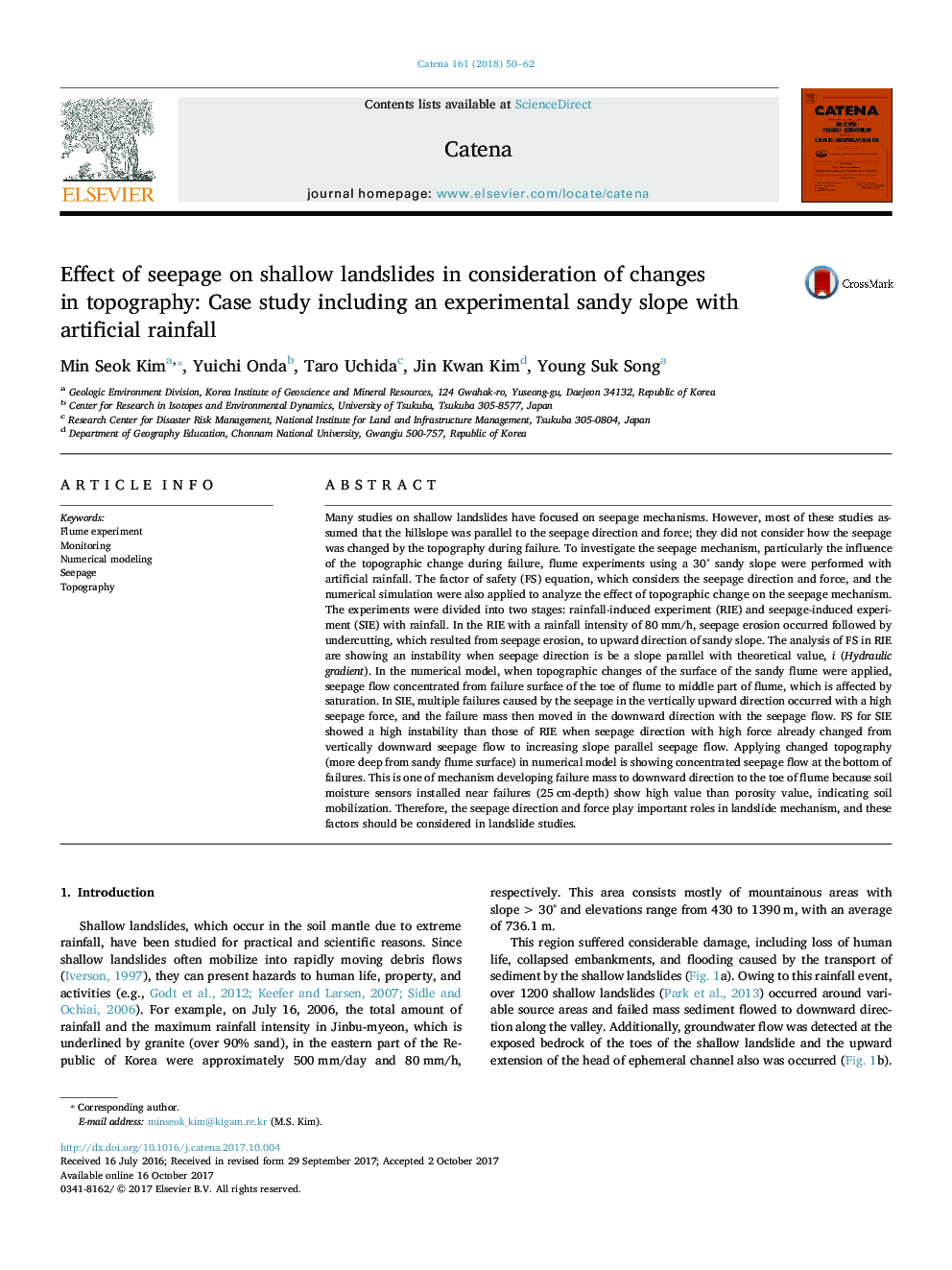| کد مقاله | کد نشریه | سال انتشار | مقاله انگلیسی | نسخه تمام متن |
|---|---|---|---|---|
| 5769835 | 1629193 | 2018 | 13 صفحه PDF | دانلود رایگان |
- Soil loses strength and deforms because of water flowing under saturated soil in rainfall-induced experiment.
- Multiple failures are caused by the seepage of the upward direction in seepage-induced experiment.
- Seepage mechanism is affected by changes in the topography through numerical modeling.
- Seepage mechanism plays an important role in shallow landslide formation.
Many studies on shallow landslides have focused on seepage mechanisms. However, most of these studies assumed that the hillslope was parallel to the seepage direction and force; they did not consider how the seepage was changed by the topography during failure. To investigate the seepage mechanism, particularly the influence of the topographic change during failure, flume experiments using a 30° sandy slope were performed with artificial rainfall. The factor of safety (FS) equation, which considers the seepage direction and force, and the numerical simulation were also applied to analyze the effect of topographic change on the seepage mechanism. The experiments were divided into two stages: rainfall-induced experiment (RIE) and seepage-induced experiment (SIE) with rainfall. In the RIE with a rainfall intensity of 80 mm/h, seepage erosion occurred followed by undercutting, which resulted from seepage erosion, to upward direction of sandy slope. The analysis of FS in RIE are showing an instability when seepage direction is be a slope parallel with theoretical value, i (Hydraulic gradient). In the numerical model, when topographic changes of the surface of the sandy flume were applied, seepage flow concentrated from failure surface of the toe of flume to middle part of flume, which is affected by saturation. In SIE, multiple failures caused by the seepage in the vertically upward direction occurred with a high seepage force, and the failure mass then moved in the downward direction with the seepage flow. FS for SIE showed a high instability than those of RIE when seepage direction with high force already changed from vertically downward seepage flow to increasing slope parallel seepage flow. Applying changed topography (more deep from sandy flume surface) in numerical model is showing concentrated seepage flow at the bottom of failures. This is one of mechanism developing failure mass to downward direction to the toe of flume because soil moisture sensors installed near failures (25 cm-depth) show high value than porosity value, indicating soil mobilization. Therefore, the seepage direction and force play important roles in landslide mechanism, and these factors should be considered in landslide studies.
Journal: CATENA - Volume 161, February 2018, Pages 50-62
